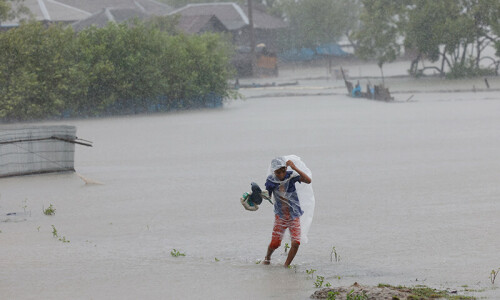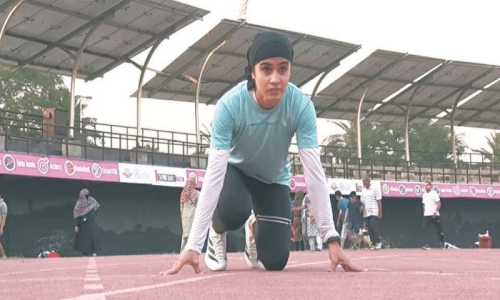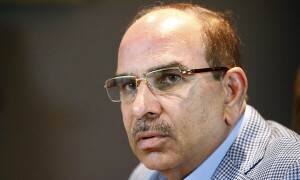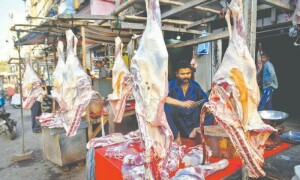KARACHI: During a three-day joint Pakistan and Bangladesh workshop being held off Marriott Road on the lane behind Denso Hall, also known as Rahguzar, female architecture students from three universities got busy working with bamboos.
They were building a bamboo hut under the supervision of Pakistan’s first female architect Yasmeen Lari. The students belonged to the NED University of Engineering and Technology, Dawood University of Engineering and Technology and The University of Lahore.
Zero carbon movement
During the workshop, the architecture students were introduced to bamboo cutting procedures followed by making and assembling prefabricated panels and roofs and then completing the structure by putting together the panels to erect walls and roof.
It was a great way of engaging universities and youth with the zero carbon movement.
It is Yasmeen Lari’s belief that architects should not limit themselves to one medium of construction. There are other ways and materials, too, besides using concrete and cement to build houses and buildings. She has herself worked with indigenous materials such as mud, limestone and wood to make better cost-effective, eco-friendly and safe houses for poor people and those displaced due to natural disasters such as earthquakes, storms and floods here.
Three-day Pak-Bangla architecture workshop concludes
On Wednesday, the concluding day of the workshop there, like on the previous two days, there was a big electronic screen put up in the lane. Community architects, master planners and teachers also joined in through live streams from Bangladesh to exchange views about low-cost housing, women builders and women masons and creating green spaces in communities.
The Rahguzar, where they have created a landscaped street in the middle of a busy market, is a fine example of this.
Students going to London
Through the initiative of the British Council, Heritage Pakistan and the International Network for Traditional Building, Architecture and Urbanism some of the students building the bamboo hut during the workshop are now looking forward to travel to London in March to set up a similar structure in Granary Square to set up a unique example of Pakistan/Bangladesh cooperation and female empowerment.
Esha Shafqat, a fourth-year student of architecture from the University of Lahore, was excited to be going to London. “It will be my first time abroad,” she told Dawn. “Actually, Ms Lari is sponsoring three students, one from each university here. But my university has said that they will be sending the rest of their students themselves,” she shared.
The girls were all wearing sneakers as they got busy building the roof. A pep talk before that saw one of the seniors telling the rest to be careful when climbing up the structure. “If you have height phobia, take care of your balance and try not to look downwards. Take care of yourself as well as others,” advised a senior.
Sehrish Anwar, another fourth-year student from Dawood University, pointed to the other things made out of bamboo at Rahguzar. “Look at the dustbins, the planters, the bathrooms here. They are all made out of bamboo,” she said.
Maria Amur, her friend, said that they had been carrying out surveys, collecting public opinion about what people think buildings should be like here. “There are 20 people living here in houses built on 120 square yards. That’s how so many succumbed to Covid-19 here. There is no circulation of air in our concrete structures,” she said.
Sustainable approaches
Nawal Khan, a third-year student from NED, said that architects needed to look into sustainable approaches that require less maintenance while lowering the carbon footprint.
“We are all working with materials in view of geographical conditions and climate change,” said Ms Lari.
“Pakistan is most vulnerable due to climate change just like Bangladesh. Women being sensitive to these things are taking the initiative to build low-cost housing themselves. It is also about women empowerment,” she said.
“A major portion of our population here happens to be below the poverty line and thus they are living in slums, which are vulnerable. but it is lovely to see so many involved in community work, building amazing structures using new technology and material,” she concluded.
Published in Dawn, February 24th, 2022













































Dear visitor, the comments section is undergoing an overhaul and will return soon.